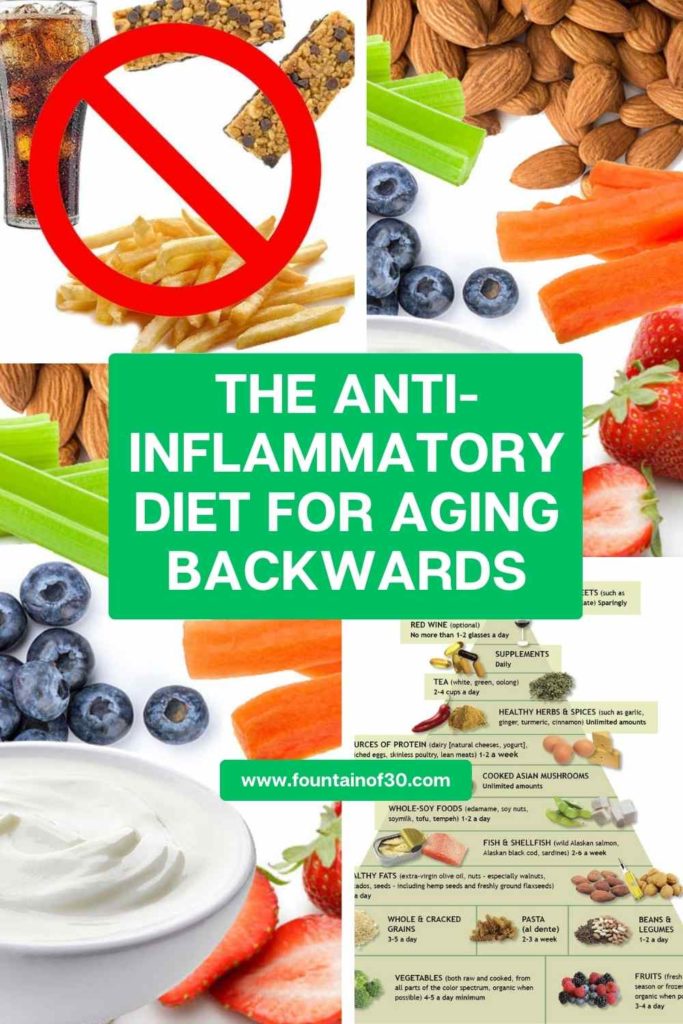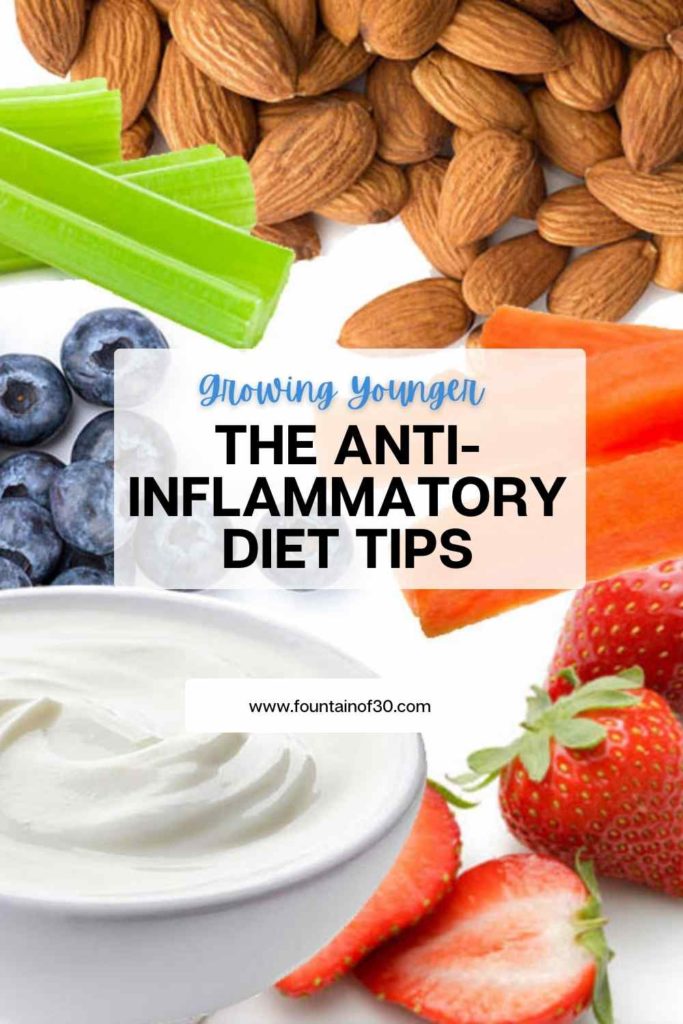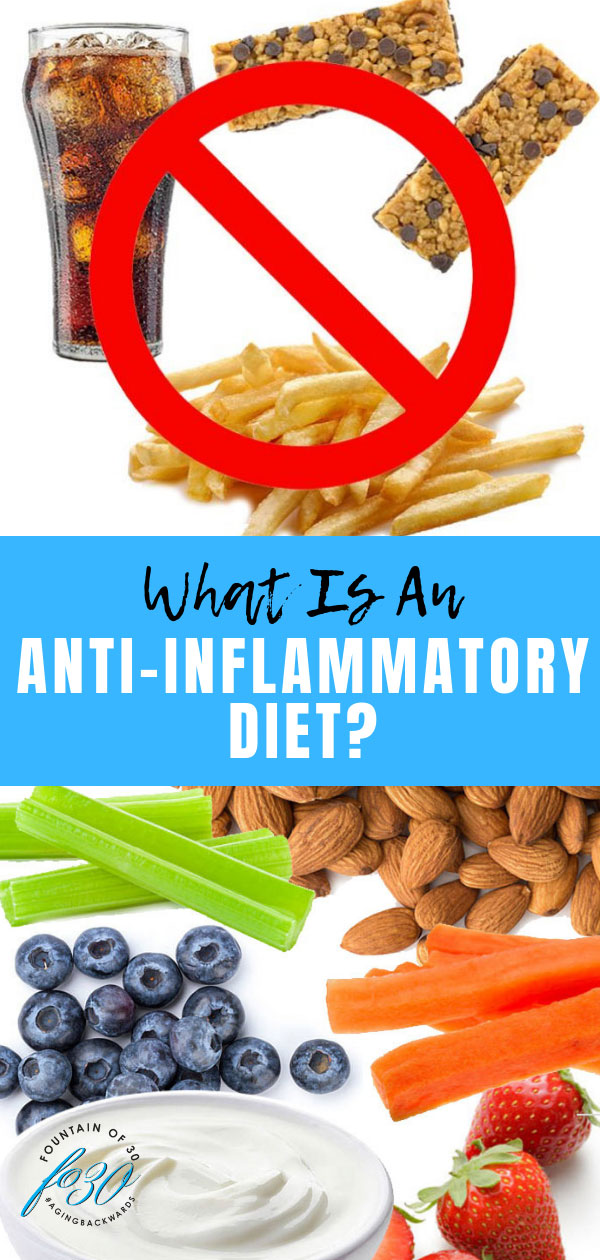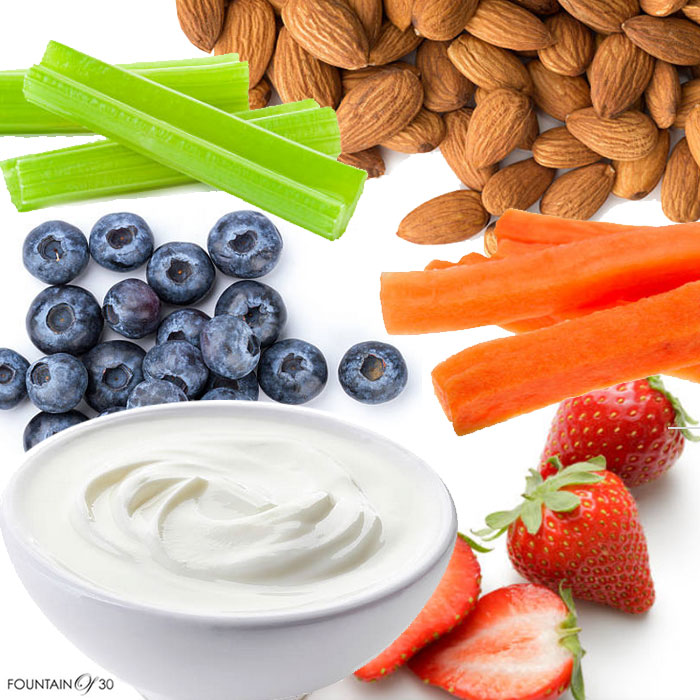Once we hit midlife, supplements definitely matter—but if you’re serious about aging backwards, you’ve got to do more. I’m going to be real with you—like your no-BS best friend—this part might be hard to hear. If you want to look and feel younger, you have to start eating for long-term health. That means focusing on reducing internal inflammation.
Note: This post previously published on August 5, 2017.
Why does that matter? Because chronic inflammation is behind so many of the diseases we fear most—rheumatoid arthritis, heart disease, Alzheimer’s, Parkinson’s, even cancer. These are the things we want to avoid because they can take us down. Aging well starts from the inside out—and what you put on your plate is a big part of the equation.
YES! I LOOK FORWARD TO #GROWINGYOUNGER
PLEASE SUBSCRIBE ME TO YOUR MAILING LIST.
Eating healthier on the Anti-Inflammatory Diet not only helps protect against certain diseases and provides organ longevity, it also slows the aging process by stabilizing blood sugar and increasing your metabolism. An added bonus is you might also lose some weight, although the goal is to optimize health. So the term “diet” is a bit misleading since this is a lifestyle change or a new lifestyle approach.
The Anti-Inflammatory Diet
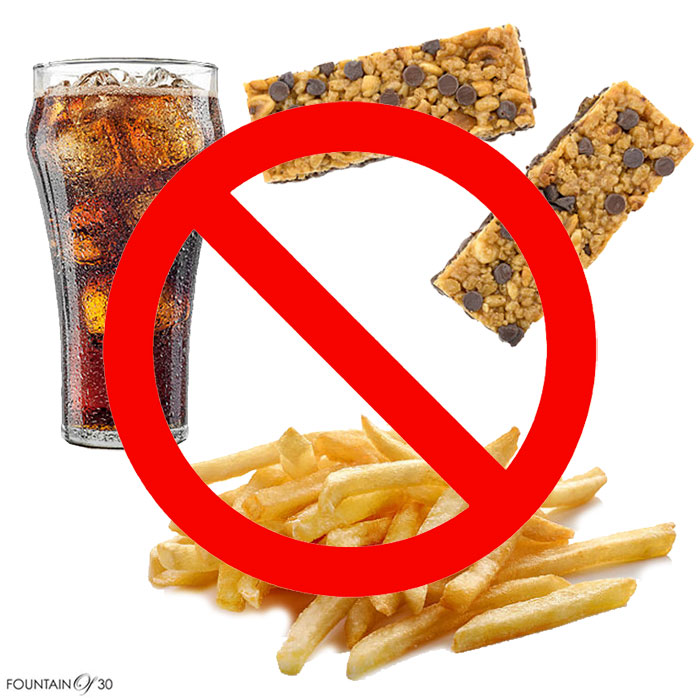
What Foods to Avoid
I can tell you what foods to avoid right now; processed foods, preservatives and fried foods. Try to limit dairy, alcohol (red wine has Resveratrol which is healthy in moderation) and caffeine. You should also stay away from white starches, sugar, diet soft drinks (well all soft drinks really), high fructose corn syrup (it is 20 times sweeter than regular sugar and can be found in most yogurts, wheat bread and cereal bars, which our bodies turn into fat because it confuses the brain).
Also never eat Olestra or Olean (found in light potato chips) or anything marked “Low Fat.” Tons of chemicals have been added to American foods (thanks FDA) and our bodies don’t know what to do with them. If you research processed foods, you will be shocked. So eat like someone who grew up before the processed food explosion—back when real, whole foods were the norm and ingredient lists weren’t a mile long. And most importantly, don’t overeat.
Avoid Processed Foods and Refined Sugars
Make it your mission to avoid processed foods and refined sugars. High-fructose corn syrup and high sodium both contribute to inflammation throughout the body. Shun refined sugars whenever possible and artificial sweeteners altogether. Excess fructose can cause increased insulin resistance (which can lead to type-2 diabetes), raised blood pressure, increased risk of fatty liver disease, and more. Why even consume it then?
Cut Out Trans Fats
Also, cut out trans fats. In 2006, the FDA required that food manufacturers identify trans fats on nutrition labels. Why? Because they are horrible for you! People who consume foods high in trans fats have higher levels of C-reactive protein which is a biomarker for inflammation in the body. Always read labels and sidestep products that contain the words “hydrogenated” or “partially hydrogenated oils.” Vegetable shortenings, margarines, crackers, and pre-packaged cookies are just some examples of foods that typically contain trans fats.
Now I know you are probably thinking “my life will be no fun.” Well that’s simply the wrong attitude. It will and can be fun! Especially when you look and feel better than most people your age. If you keep abusing the types of foods listed above, your life is going to be a lot less fun because you could become ill or worse. Besides, we are not saying to never touch these foods again, but try to consume them once in a great while. Make them the exception, not the rule.
What is Inflammation?
Inflammation is a normal bodily function and is important in the healing process (like a wound). It allows helpful antibodies to enter the space where the wound is and stimulates other important parts of the immune response to help you heal. We would actually be in big trouble if we did not have an inflammatory response.
To put it simply, the inflammatory response is a series of defense mechanisms and signals that recruit anti-inflammatory cells to the area of damage, and then those trigger other cells that trigger other protective mechanisms to protect you from harmful invaders or damage to tissue.and so on. Before you know it you have pain and swelling. If the inflammatory response is not managed properly it can start to become faulty and a real problem for our bodies. But don’t worry! You have the power to take control!
Why is it Bad?
When is inflammation bad? When the immune system gets out of control and causes excessive inflammation, or when it triggers the inflammatory response when it’s not necessary. If your immune system detects a cell is a potentially harmful bacteria or virus, it will read the signal, know that it is an outside invader, and respond accordingly.
Immune system dysfunction is when the immune system loses some of its ability to distinguish between good and bad issues. If the immune system is in overdrive it can start attacking the body’s own tissues which leads to autoimmune disease. So while inflammation is normally the way the immune system protects itself, when it’s faulty or overactive it can cause a lot of damage.
Stress is also particularly harmful when it comes to inflammation. Chronic stress changes the activity of the genes of immune cells making them more likely to attack the body’s own tissue and trigger an autoimmune response. This is called chronic inflammation.
What are the Signs of Chronic Inflammation?
- Frequent headaches and/or fogginess
- Bloating and digestive problems
- Fatigue
- Weight gain
- Joint pain
- Rashes
- Gum disease
- Moodiness
The Anti-inflammatory Diet
The good news is, you can eat to protect your immune system! An Anti-Inflammatory Diet includes whole grains, legumes, organic eggs, fish, grass fed meats in moderation, dark chocolate and the like. You can easily Google an Anti-Inflammatory Diet but I’m going to break it down for you into 8 tips to get you on your way.
Again, the Anti-Inflammatory Diet is not intended as a weight-loss program nor is it an eating plan to stay on temporarily. Rather, it’s a new way of thinking and eating to help your body maintain optimum health. A natural anti-inflammatory diet provides consistent energy and plenty of vitamins, minerals, essential fatty acids dietary fiber, and protective phytonutrients (these are plant based chemicals that help protect plants from germs, fungi, bugs,etc. Found in fruits, vegetables and whole grains). In addition you can and should also take herbs and supplements which I have explained in my recent post; How To Age Backwards? The Key Is Supplements & Nutrition. These two together make a powerful anti-aging and anti-illness combination!
If you really want to learn more about an Anti-Inflammatory Diet and the Dr. Weil Anti-Inflammatory Diet Pyramid you should read this post by the expert himself. Dr. Andrew Weil’s Anti-Inflammatory Diet contains everything you need to know and more (actually you should get his book Healthy Aging: A Lifelong Guide to Your Well-Being). But don’t worry, it’s not too much to digest (get it?).
8 Tips to Get You on Your Way
1. Eat a minimum of nine servings of fruits and vegetables every day.
One “serving” is half a cup of a cooked fruit or vegetable, or one cup of a raw leafy vegetable. Also add anti-inflammatory herbs and spices like turmeric, rosemary and ginger to your cooked fruits and vegetables to increase their antioxidant abilities.
2. Consume at least 25 grams of fiber every day.
A fiber-rich diet helps reduce inflammation by supplying naturally occurring anti-inflammatory phytonutrients found in fruits, vegetables, fiber and whole grains. The includes foods like barley and oatmeal; vegetables like okra, eggplant, and onions; and a variety of fruits like bananas (3 grams of fiber per banana) and blueberries (3.5 grams of fiber per cup).
3. Eat 4 servings of both alliums (garlic, scallions, onions, and leeks) and crucifers (broccoli, cabbage, cauliflower, mustard greens, and Brussels sprouts) every week.
Since these have such powerful antioxidant properties having 4 servings a week will help lower your risk of cancer. Try eating a clove of garlic a day or if you are afraid you will have no friends take a natural garlic pill!
4. Limit saturated fat to 10 percent of your daily calories.
By keeping saturated fat low (that’s about 20 grams per 2,000 calories), you’ll help reduce the risk of heart disease. Also limit eating red meat to once a week and make sure it is grass-fed. Marinate it with herbs, spices, and tart, unsweetened fruit juices to combat toxic compounds formed during grilling.
5. Eat foods rich in omega-3 fatty acids.
Omega-3 fatty acids reduce inflammation and may help lower risk of chronic diseases such as heart disease, cancer, and arthritis. Foods high in omega-3 fatty acids are flax meal, walnuts, and beans such as navy, kidney and soy. Eat cold-water fish such as salmon, oysters, herring, mackerel, trout, sardines, and anchovies at least 3 times per week. Also take a good-quality omega-3 supplement just to be safe.
6. Only use oils that contain healthy fats.
The body requires fat, but opt for fats that provide you with benefits. These would include cooking with virgin and extra-virgin olive oil (organic if possible) and expeller-pressed canola, sunflower and safflower oil.
7. Sweeten meals with phytonutrient-rich fruits, and flavor foods with spices.
Most fruits and vegetables are loaded with important phytonutrients. Instead of using sugar naturally sweeten your meals by adding apples, apricots and berries. To flavor savory meals, opt for spices that are known for their anti-inflammatory properties; turmeric, cinnamon, cloves, ginger, sage, rosemary and thyme.
8. Eat healthy snacks twice a day.
Yes, you can eat snacks! But make sure your snacks are fruit, plain or unsweetened Greek-style yogurt, celery, carrots and natural nuts like pistachios, almonds and walnuts.
You can do this! You should do this, and you need to do this.

You may also like to read How To Heal Your Relationship With Food and 7 Anti-Aging Beauty, Nutrition and Mind-Set Books You MUST Read.
Sources: Mind, Body Green, Dr. Andrew Weil’s Anti-Inflammatory Diet
Image: Anti-inflammatory diet pyramid, Dr. Andrew Weil
Are you following Fountain Of 30 on Facebook, X, Instagram and Pinterest? We’ve got lots going on, so join in on the fun! Subscribe to our newsletter here. You don’t want to miss a post and promise not to bug you to death. Join our Facebook Group called Growing Younger where women discuss everything good and bad about being over 50. Additionally Lauren hosts a bi-weekly podcast called Beauty is a Bitch!
Please pin!
